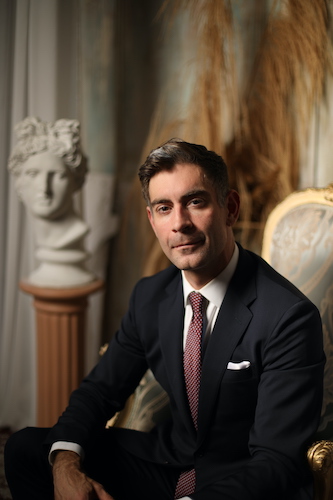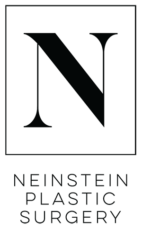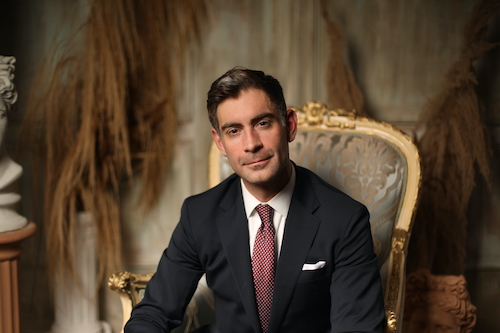by Dr. Chris Funderburk
Male Liposuction Trends Heading Into 2024
Men want to look and feel their best just as much as women do. We used to be concerned about the stigma of having “work done” but like many things in culture what was once taboo is creeping into the everyday and normalized nature. In our practice we seen men from all walks of like and all professional industries looking for some help to overcome something that bothers them. Apparently, we are not alone, the number of men seeking body contouring procedures has increased dramatically in recent years. According to the 2021 Aesthetic Society statistics report, there was an increase of approximately 55% for male plastic surgery procedures from 1997 to 2018. Each year in our practice, we have noted an increased number of men seeking liposuction and other body contouring surgeries.
We believe in hyper specialization and finding ones calling through the pursuit of mastery. At Neinstein Plastic Surgery we have a large team of dedicated over achievers 100% focused on body contouring. From the front desk to our after care strategic specialists we make your choice for male plastic surgery because we are the place that does the most and has the most predictable outcomes. We are all time poor and information rich so our passion, volume, and focus ease the clunky mental burden of having to sift through everything on the internet when it comes to male plastic surgery. With southern charm Dr Funderburk brings small town values to the big city and over the last decade has never ceased sharpening his skills and honing his artistic eye for male plastics surgery.
A Minimally-Invasive Approach to Gynecomastia (Chest) Surgery
 Gynecomastia is one of the most common problems we treat in our male patients. Lots of people call this man boobs. This condition results from growth of the glandular tissue lying beneath the areolae. Its breast tissue which is normal, but too much of it can make men feel very uncomfortable in clothing and in intimate situations. Most often, this is from growth of this tissue during puberty, which then fails to regress. Some patients also experience growth of this tissue with hormonal imbalances, the use of hormone replacement therapy or performance-enhancing steroids. Others report gynecomastia with certain prescription medications and alcohol or marijuana use.
Gynecomastia is one of the most common problems we treat in our male patients. Lots of people call this man boobs. This condition results from growth of the glandular tissue lying beneath the areolae. Its breast tissue which is normal, but too much of it can make men feel very uncomfortable in clothing and in intimate situations. Most often, this is from growth of this tissue during puberty, which then fails to regress. Some patients also experience growth of this tissue with hormonal imbalances, the use of hormone replacement therapy or performance-enhancing steroids. Others report gynecomastia with certain prescription medications and alcohol or marijuana use.
Our practice draws a lot of men from the New York City, Miami, and Los Angeles areas that are driven, hardworking, fit, and focused on getting the most out of life. From finance to fashion and 20 to 60 we see so many men that are just as frustrated with man boobs, love handles, and extra skin from weight loss as women.
For these patients, the primary treatment is resection of the enlarged breast tissue. This treatment is permanent and effective; however, many men have been afraid of the associated scarring with traditional gynecomastia procedures. Fortunately, we can now offer a minimally-invasive approach in the vast majority of cases.
For men without a large amount of excess skin on the chest, we can effectively treat gynecomastia through a very small (approximately 2 cm) incision at the base of the areolae and an even smaller incision in the hair-bearing portion of the armpit. The base of the areola is an excellent anatomical spot for a small incision as there is a natural color and texture change at this location, making the incision nearly invisible. These guys walk around proudly with their shirt off after the procedure as the scar camouflages so well
We then use three devices which enable this minimally-invasive approach. First, we use VASER, an instrument which uses ultrasound, to break apart most of the glandular tissue. Following this, we utilize quickly vibrating liposuction cannulas with special tips to both break down and remove this tissue, along with surrounding excess fatty tissue. Once the tissue has been removed, we use Renuvion to then assist in tightening the skin by heating the undersurface of the skin and promoting contraction and collagen remodeling. If a small amount of dense glandular tissue remains, we are able to remove this through the same very small incision.
Some men have an excessive amount of loose skin on the chest resulting from very large breast glands, weight loss or age. In these cases, we may need to excise extra skin, which is very effective, but does leave longer scars on the chest. The number of men needing this approach has decreased with the use of the newer technologies.
Tackling the Problem Areas in Fit and Athletic Men
Fat is not stored uniformly throughout the body. Common sites of excess fatty tissue in men are the flanks, also known as the love handles. Many of our fit and athletic male patients report stubborn fatty tissue in this area, preventing a V-shaped torso. Shrinking this area through diet and exercise often requires obtaining a very low, and often unsustainable, body fat percentage. This also has the undesirable effect of giving the face a prematurely aged appearance.
For these men, we can instead use energy driven liposuction to remove a large percentage of the excess fat cells in the flanks. This is accomplished through small (approximately 1 cm) incisions in the groin or pubic hair area and above the tailbone (coccyx). These small sites are well hidden by hair or a natural body crease. We use VASER to break down the stubborn fat, power-assisted liposuction to remove the tissue, and Renuvion to help tighten the skin.
Enhancing Natural Muscular Anatomy
Men usually approach us in consultation seeking to better show or enhance their natural muscular anatomy. We have seen a move away from procedures such as “ab-etching,” in which fake “abs” are generated by carving out the overlying fatty tissue. Instead, we have found men are seeking to show their natural, hard-wo abs and obliques which are obscured by excessive overlying fatty tissue.
To enhance the natural muscular anatomy, we use VASER, power-assisted liposuction, and Renuvion in sequence to take away some of the fat cells overlying the abdominal and oblique muscles and to help tighten the skin. We then provide extra emphasis on the natural lines between the two rectus (or six pack) muscles and between the rectus muscles and the obliques. This provides an athletic, natural appearance rather than artificial, carved out abs.
Post-Weight Loss Body Contouring
With the use of new generation weight-loss medications and an increased focus on fitness spurred by social media, we see more and more men following substantial weight loss. These men often complain of loose skin affecting their abdomen and flanks, the mons pubis (skin above the penis), arms, chest and thighs. By removing this excess skin, we enable our patients to go the “final mile” in their weight-loss journey.
Neinstein Plastic Surgery has a unique and vast experience in skin removal following weight loss making it the practice of choice for the fitness and health focused looking to get the most predictable contouring after weight loss. Dr Chris Funderburk has a very specialized set of skills particularly in male body contouring post weight loss. He has a deep understanding of the lines and angles that are unique to the male aesthetic.
These patients often need staged procedures to tackle all the affected areas. For most, a circumferential lower body lift is the preferred first surgery. This procedure allows us to remove the excess “spare-tire” of skin encircling the lower torso, while at the same time substantially tightening the abdominal and outer thigh skin and lifting the skin overlying the buttocks.
To tighten the skin of the arms and inner thighs, we often perform brachioplasties (arm lifts) and medial thigh lifts, respectively. While these procedures do lead to lengthy scars, the amount of loose skin which can be removed is dramatic.
If you are interested in a male body contouring procedure, please send us a picture or video along with your fears, feelings, and story to info@neinsteinplasticsurgery.com and our concierge team will start your journey.

